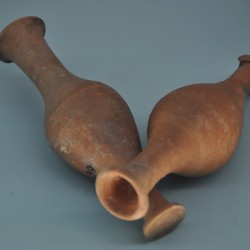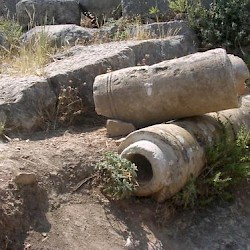Xanthus (Kınık)
Q464936Xanthus: town in western Lycia; its original name was Arňna, its modern name is Kınık.
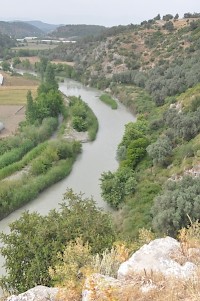
The Lycian town Xanthus was situated on a high hill near a river with the same name, about eight kilometers before it empties into the Mediterranean Sea. In a famous scene in the Iliad, Homer records how the Lycian prince Sarpedon urges his friend Glaucus to fight bravely: they hold honored seats, have the fattest sheep, drink the best wines, and have vast estates along the river Xanthus, with orchards and rich plough land - doesn't this mean that they have to fight in the vanguard?note
In the seventh century, the town must have remained the residence of Lycian princes, who lost his independence when the town was captured by the Persian commander Harpagus in the mid-sixth century BCE. Archaeologists have found traces of the destruction, which is described by the Greek researcher Herodotus.note
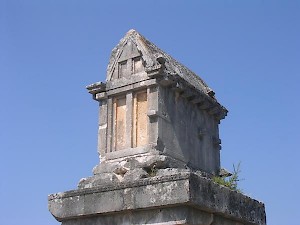
Although many people were killed, the town was repopulated and prospered during the Persian age. Probably, the prince of Xanthus was considered to be the representative of all Lycians vis-à-vis the Persian satrap. One of the Xanthian leaders, called Cybernis by Herodotus and almost certainly identical to the Kuprlli we know from Lycian sources, took part in Xerxes' expedition to Greece (480 BCE).note By the mid-fifth century, however, the ruling dynasty had started to act as if it were independent from the Achaemenid Empire, and for some time, Xanthus was a member of the Athenian alliance, the Delian League.
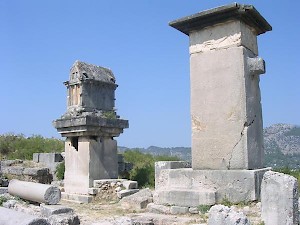
Monuments from this period are the city wall, several tombs (e.g., the Harpy Tomb), and a nearby sanctuary that was dedicated to Leto, the mother of Apollo and Artemis. This triad was among the most popular deities of Lycia, and control of the Letoon must have contributed to Xanthus' importance.
The membership of the Delian League did not last. At the beginning of the Archidamian War (431-421), Xanthus had become independent. The city now embarked upon an assertive foreign policy and is known to have subjected nearby Telmessus in the 420s. The increased status of the Xanthian princes can be deduced from the fact that we have several monuments and inscriptions. Best-known is a ruler named Kherei, who is commemorated with an inscription on a pillar on the agora.
| Kuprlli (Cybernis) | c.480-c.440 |
| Kheriga (Gergis) | c.440-c.425 |
| Kherei (son of Harpagus) | c.425-c.400 |
| Erbbina (Arbinas) | c.400-c.385 |
In the first quarter of the fourth century, the ruling dynasty lost its power: Kherei's successor Arbinas had to reconquer Xanthus, Telmessus, and Patara, and eventually became a subject of Pericles of Limyra, who would call himself "king of Lycia". Pericles, in turn, did not survive the Revolt of the Satraps (366-360) and Xanthus now became part of the zone of influence of the Carian leader Maussolus.
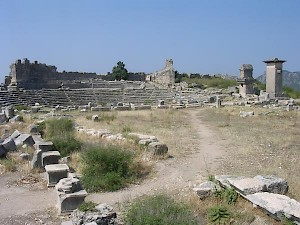
The city, which already was hellenizing itself, became increasingly Greek, as we can recognize in the Tomb of Payava and the Nereid Monument (c.385 BCE). This process was sped up after the conquest by Alexander the Great, who acquired Lycia in the winter of 334/333.
After Alexander's death, the city successively belonged to the Ptolemaean and Seleucid empires, was controled by Rhodes, was a founding member of the independent Lycian League, and finally became part of the Roman Empire. In 42 BCE, the city was sacked by Roman general Brutus, the assassin of Julius Caesar.note Officially, Xanthus retained some of its independence, but during the reign of Augustus, it stopped minting its own coins, and in 43 CE, the emperor Claudius added Xanthus to the province of Lycia et Pampylia.
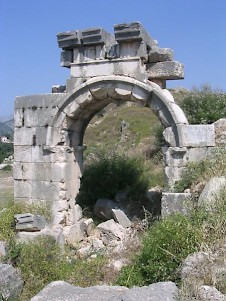
A monument from the Roman age is the honorific arch dedicated to the Roman emperor Vespasian (r.69-79). The Roman theater of Xanthus was built in the mid-second century CE by a Lycian millionaire named Opramoas of Rhodiapolis. It was a giant project that forced the inhabitants to redesign their city center completely.
The city is mentioned as the see of a bishop in the fourth century and continued to flourish during the fifth and sixth centuries, when the city's walls were restored, at least three churches were built, and a monastery was founded. The crises provoked by the war against the Sasanians at the beginning of the seventh century and the rise of Islam in the second quarter of that century, marked the end of prosperity in the eastern Mediterranean, and meant the beginning of the end of Xanthus.


